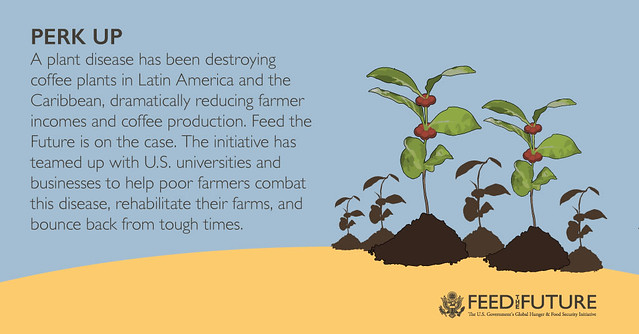When was the last time you bought a bar of chocolate? Perhaps it was to celebrate a holiday – Halloween, or Valentine’s Day – or because you had a craving for something sweet. It’s a treat that’s almost universally loved, and fills aisles in U.S. stores this time of year.
But for many smallholder farmers across the world, chocolate isn’t just a culinary delight – it’s a way to make a living and pave a path out of poverty. In Haiti, humble cocoa beans, which are eventually transformed into chocolate, are helping improve the livelihoods of Haitian farmers and their families, and increasing their ability to purchase more and healthier food.
Old Trade, New Progress
Since its 2010 earthquake, Haiti has endured great hardship, but there are also reasons for optimism as the country continues to make progress towards fighting hunger and undernutrition. Much of that is due to Haiti’s focus on important crops – such as mango, rice, beans and especially cocoa, an increasingly valuable crop for Haitian farmers.
The vast majorityof the world’s cocoa still originates from small, family-run farms that have limited access to resources, and Haiti is no different. Although cocoa production isn’t new in Haiti, its cocoa has rarely met international standards and failed to attract the high-end export market. Cocoa farmers must often contend with low yields due to pests and aging trees, difficulty in obtaining farming supplies and in adopting improved farming techniques, and limited market access, among other challenges.
The U.S. Government’s Feed the Future initiative is helping smallholder farmers in Haiti get the training they need to overcome production challenges, acquire high-quality seeds and seedlings, and engage in better trade and marketing of their product. Through this work, Feed the Future aims to double the incomes of at least 20,000 rural households who grow cacao, rice and plantains, helping them rise out of poverty and improve their nutrition.
For cocoa farmers participating in the training, increased access to agricultural and market information will help them improve the quality of the cocoa they produce and increase the prices they’re paid for it. Feed the Future is also partnering with local Haitian cocoa export firms to increase local cocoa production and exports of Haitian cocoa.
“This program is teaching us important techniques, such as how to prepare the land and take care of the trees, and how to treat the beans to get the best flavor,” explains one of the participating farmers. “Now we can get higher yields and produce better quality.”
As demand for cocoa – and chocolate – continues to grow worldwide, Feed the Future will continue to partner with smallholder farmers, local organizations, chocolate businesses, exporters, and governments to help farmers benefit. By helping smallholder farmers increase their cocoa production and expand access to the cocoa industry, we can help millions of smallholders achieve better food security, increase their incomes and nutrition, and participate in the global economy.

About Feed the Future: Feed the Future is the U.S. Government’s global hunger and food security initiative. With a focus on smallholder farmers, particularly women, Feed the Future supports partner countries in developing their agriculture sectors to spur economic growth and trade that increase incomes and reduce hunger, poverty and malnutrition. To read more stories of how Feed the Future works with farmers in the Latin America and the Caribbean, explore our 2015 Progress Report.
This article originally appeared on The Hunger and Undernutrition Blog.



